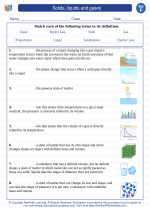Eight Planets
The eight planets in our solar system are Mercury, Venus, Earth, Mars, Jupiter, Saturn, Uranus, and Neptune. These planets orbit the Sun and are categorized into two groups: terrestrial planets and gas giants.
Terrestrial Planets
The terrestrial planets are the inner planets of the solar system, which are Mercury, Venus, Earth, and Mars. They are primarily composed of rock and metal, have solid surfaces, and are relatively small compared to the gas giants.
Mercury
Mercury is the closest planet to the Sun and has a heavily cratered surface due to impacts from asteroids and comets. It has a very thin atmosphere and extreme temperature variations.
Venus
Venus is often called Earth's "sister planet" due to its similar size and composition. It has a thick, toxic atmosphere and is the hottest planet in the solar system due to its greenhouse effect.
Earth
Earth is the third planet from the Sun and the only known planet to support life. It has a diverse environment with oceans, land, and an atmosphere that sustains a wide variety of life forms.
Mars
Mars is known as the "Red Planet" due to its reddish appearance caused by iron oxide on its surface. It has the largest volcano and canyon in the solar system and is being explored for potential signs of past or present life.
Gas Giants
The gas giants are the outer planets of the solar system, which are Jupiter, Saturn, Uranus, and Neptune. They are primarily composed of hydrogen and helium, have thick atmospheres, and are much larger than the terrestrial planets.
Jupiter
Jupiter is the largest planet in the solar system and has a strong magnetic field. It is known for its Great Red Spot, a giant storm that has been raging for centuries, and it has a large system of moons and rings.
Saturn
Saturn is famous for its prominent ring system, which is made up of ice particles and rocky debris. It has the second-largest moon in the solar system, Titan, which has a thick atmosphere and hydrocarbon lakes.
Uranus
Uranus is unique among the planets because it rotates on its side, causing extreme seasonal variations. It has a faint ring system and is often referred to as an "ice giant" due to its composition of water, ammonia, and methane ices.
Neptune
Neptune is the farthest planet from the Sun and was the first planet to be discovered through mathematical predictions rather than direct observation. It has the strongest winds in the solar system and is accompanied by a system of moons and faint rings.
Study Tips
- Memorize the order of the eight planets from the Sun: Mercury, Venus, Earth, Mars, Jupiter, Saturn, Uranus, Neptune.
- Learn key characteristics of each planet, such as size, composition, atmosphere, and notable features.
- Understand the differences between terrestrial planets and gas giants in terms of composition, size, and location in the solar system.
- Use mnemonics or visual aids to help remember the names and order of the planets.
- Explore the latest discoveries and missions related to the planets, such as NASA's exploration of Mars or the study of exoplanets beyond our solar system.
[Eight Planets] Related Worksheets and Study Guides:
.◂Science Worksheets and Study Guides Sixth Grade. Solids, liquids and gases

 Activity Lesson
Activity Lesson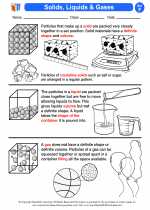
 Worksheet/Answer key
Worksheet/Answer key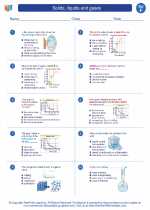
 Worksheet/Answer key
Worksheet/Answer key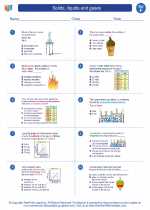
 Worksheet/Answer key
Worksheet/Answer key
 Vocabulary/Answer key
Vocabulary/Answer key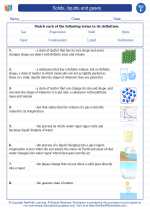
 Vocabulary/Answer key
Vocabulary/Answer key